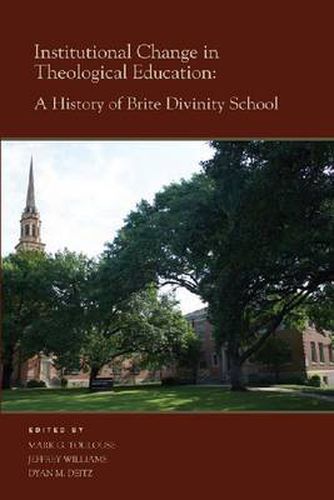Readings Newsletter
Become a Readings Member to make your shopping experience even easier.
Sign in or sign up for free!
You’re not far away from qualifying for FREE standard shipping within Australia
You’ve qualified for FREE standard shipping within Australia
The cart is loading…






This book contains the story of faculties, deans, presidents, and chancellors, and the struggle among them to define either the goals of theological education or the quality of a university and the role of religion within it. The struggle takes place in the midst of the changing nature of both theological education and higher education in general, whether private or public. It involves the evolution of a school’s identity through both the halcyon days (the 1950s) and the cultural disestablishment and, as some would define it, the downright demise (from the 1960s) of mainstream Protestantism in the United States. Ultimately, the book analyzes the transformation of the school itself: from one located in a rural outpost just outside of Waco, Texas, to one found in the heart of a major city; from educating mostly white Disciples of Christ men for ministry to educating quite a diverse crop of women and men, representing a variety of ethnic and international identifications, both gay and straight, for the ministry of at least thirty different denominations, and educating still others, including Christians, Jews, and other non-Christians, for vocations in social service agencies, academic contexts, and a variety of jobs involving public leadership.
$9.00 standard shipping within Australia
FREE standard shipping within Australia for orders over $100.00
Express & International shipping calculated at checkout
This book contains the story of faculties, deans, presidents, and chancellors, and the struggle among them to define either the goals of theological education or the quality of a university and the role of religion within it. The struggle takes place in the midst of the changing nature of both theological education and higher education in general, whether private or public. It involves the evolution of a school’s identity through both the halcyon days (the 1950s) and the cultural disestablishment and, as some would define it, the downright demise (from the 1960s) of mainstream Protestantism in the United States. Ultimately, the book analyzes the transformation of the school itself: from one located in a rural outpost just outside of Waco, Texas, to one found in the heart of a major city; from educating mostly white Disciples of Christ men for ministry to educating quite a diverse crop of women and men, representing a variety of ethnic and international identifications, both gay and straight, for the ministry of at least thirty different denominations, and educating still others, including Christians, Jews, and other non-Christians, for vocations in social service agencies, academic contexts, and a variety of jobs involving public leadership.